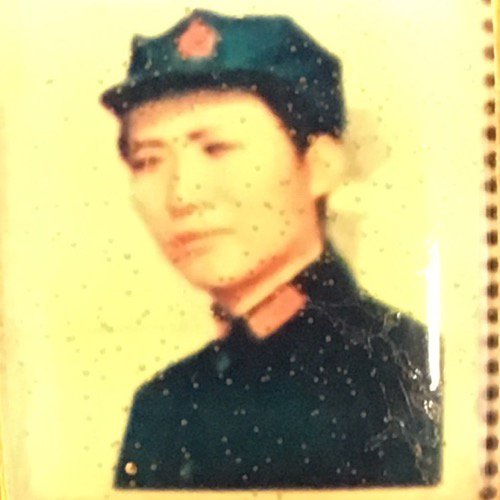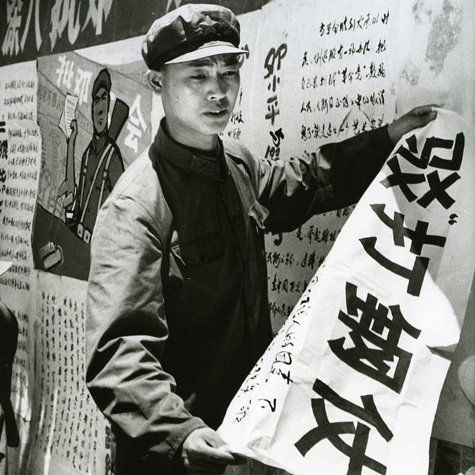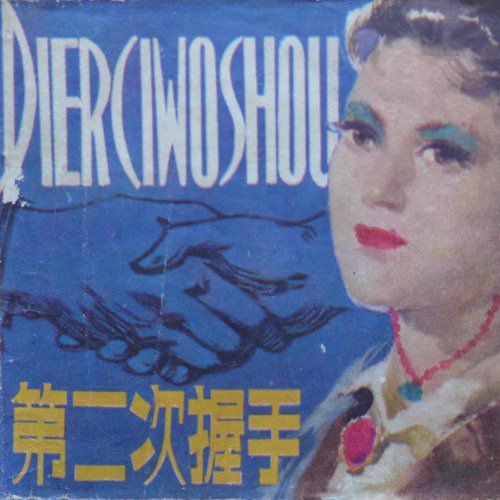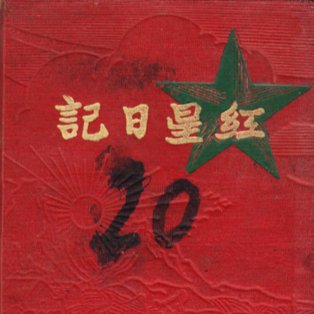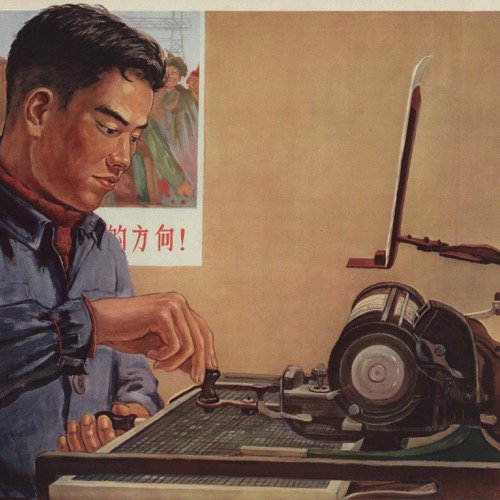Daniel Leese, University of Freiburg
Summary
The Little Red Book was the most prominent icon of the Cultural Revolution. It played a key role in mobilizing the populace and heavily influenced contemporary rhetoric. Despite its towering success, with over one billion copies printed, the compilation history of the Little Red Book is full of unexpected twists and turns. From revolutionary weapon to sacred icon, the volume fulfilled multiple functions and presents a fascinating example of how objects may acquire different symbolic meanings in revolutionary politics.Introduction
Quotations from Chairman Mao (Mao zhuxi yulu 毛主席语录), also known as the 'Little Red Book', was the most prominent icon of the Cultural Revolution. It was printed just over one billion times between 1966 and 1971. It achieved supreme importance as the ultimate guide to political action and moral behavior. Several factors explain the Little Red Book’s enormous distribution numbers and its resonance with the Chinese populace. First, the compilation was not a novel phenomenon in Chinese culture; collected sayings were frequently employed to spread the wisdom of religious or secular sages. Second, the communist claim to represent the absolute truth of a scientific worldview encouraged utmost reverence for works in the Marxist-Leninist canon. The ingenious physical format of the Quotations presents a third distinctive feature. Fourth, and without doubt the most important reason, was the political environment. As the former propaganda establishment came under heavy attack for having hampered the spread of Mao Zedong Thought, the new leadership raised production numbers as tokens of revolutionary loyalty. Finally, in the absence of a functioning party bureaucracy, the decontextualized quotations could be employed for highly diverse aims, and supplied skillful orators with a means of empowerment in local power struggles. This object biography focusses on the latter three aspects and traces the contingent compilation process and publication history of the book in the Mao era.
Manufacturing the Quotations
Minister of Defense Lin Biao 林彪 is often credited with being the mastermind behind the compilation. However, his influence was restricted to the style of study that he introduced in order to contain the impact of the Great Leap Forward among the largely rural-based rank and file of the army. In 1961, Lin Biao ordered the army organ PLA Daily to come up with a daily Mao quote to underscore the main gist of the day’s editorial. The need for a daily Mao quote on a certain topic required the accumulation of a systematic selection of quotes from Mao’s officially published works and speeches. The editors were lucky to hear about a Tianjin Daily catalogue of Mao quotes arranged according to certain topics, such as the 'mass line', 'people’s war', or 'class struggle'. The catalogue was copied and came to constitute the core of the Little Red Book.

The compilation process was similarly contingent. In December 1963 at a work conference of the General Political Department of the PLA, the idea to compile a selection of Mao quotes in book form for use within the army was first presented. The delegates greeted the proposal with great enthusiasm and, as a result, a first draft was produced entitled 200 Quotations from Chairman Mao. The first official edition of the Quotations from Chairman Mao appeared after several revisions in May 1964. The book contained a collection of 355 quotations and assembled under 30 topics. The cover of the first edition was plain white [see ⧉source: Cover of the first edition of the Quotations, also depicted to the left], with a smaller number of books covered in red vinyl. It furthermore featured an embarrassing spelling error in Lin Biao’s dedication [see ⧉source: Dedication page written by Lin Biao]. The Quotations were not sold officially. However, the enormous excess demand of requests from military and civilian units quickly overexerted the capabilities of the PLA Publishing House. From September 1964 onward, printing molds were handed out to civilian publishing houses on occasion to release the pressure. Simultaneously, the PLA Political Department revised the content. Three chapters were added and the number of entries was expanded to 427 quotations. As the second official edition appeared in August 1965, red vinyl by and large replaced the white paper cover and the Little Red Book had thus gained its distinctive appearance and content [see ⧉source: Cover of the second edition of the Quotations].
For use in group study and recitation, the selected quotations were usually devoid of concrete political analysis, and instead stated moral truths to be learned by heart and 'applied' in everyday life. The fragments were not aimed at provoking critical inquiry or analysis and did not add up to a general introduction to Mao Zedong Thought. Accordingly, there was considerable opposition both within the CCP and PLA leadership to the reduction of Mao Zedong Thought to a set of moral platitudes. Deng Xiaoping characterized Lin Biao’s ritualistic approach as vulgarization of Mao Zedong Thought in 1960 already. He perceived the danger to the larger project of socialist construction in rendering the truth-value of its ideology obscure and thus prone to confusion and ridicule. After the first edition of the Quotations gained enormous attention, thus attempts from within the civilian administration were taken to advance the knowledge of Mao Zedong Thought in more comprehensive fashion and two alternative editions were compiled, yet to no avail [see ⧉source: Alternative edition cover image]. The main reason why internal party criticism of the army edition proved futile was that Mao Zedong himself was rather fond of the book and obviously enjoyed his sage-like status.
A Single Spark Can Start a Prairie Fire
The enormous demand for the Quotations had come as a surprise to the party leadership. By March 1966, 28 million copies of the second edition had been printed and resources had been allocated for another 51 million copies. The demand for the Quotations skyrocketed, but still it remained an internal army publication until April 1966, when the People’s Publishing House was ordered by the CCP Center to take over printing and to supply the book to the general public via the Xinhua bookstores.
As the content of the book consisted of previously published items only, it did not present riveting new insights. The attraction of the Quotations from Chairman Mao owed to form rather than content. The decontextualized utterances eased memorization and group recitation, but also allowed for near indefinite recombination and thus provided the fundaments for creative exegesis. The lack of a coherent philosophical framework permitted free association of the Quotations, even within contradictory arguments. As for its design, the book’s red vinyl cover presented a fashionable novelty that along with other army accessories resonated with contemporary youth culture. Prior to the outbreak of the Cultural Revolution, its secret and hard-to-obtain nature only increased the appeal; later it became an indispensable badge of loyalty. As late as March 1966 the Little Red Book was not actively promoted outside the army. The Ministry of Culture specifically ordered that there was to be 'no notice within the papers, no advertising, no public displays, and no sale to foreigners.' The State Council’s Foreign Affairs Department in March 1966 issued a circular requesting all foreigners who had managed to obtain a book to return it, since the book did not represent a comprehensive rendering of Mao Zedong Thought and was for internal study only.
With the outbreak of the Cultural Revolution in May 1966, the former CCP propaganda and cultural institutions were accused of deliberately hindering the enhancement of Mao Zedong Thought. A primary sin was the less than enthusiastic attitude in propagating the Little Red Book. The tiny percentage of Mao’s works within the whole publishing industry was taken as example of their heinous crimes. In order to avoid humiliation and torture for committing similar 'crimes', cadres in charge of propaganda stepped up the printing of Mao’s works and the Little Red Book as proof of their revolutionary attitude. Between 1966 and 1970, the amount of paper used for the official print of Mao’s works amounted to 650,000 tons, slightly more than had been used between 1949 and 1965 for all published items in China.

By late June 1966 basically the whole Chinese publishing industry was geared toward the production of Chairman Mao’s works, even at the expense of school textbooks [see ⧉source: Revolutionary textbook]. The target number of the Quotations had been raised to 200 million copies for the two-year period of 1966 and 1967. Every ministry, department and region tried to outshine the other by proving their utmost dedication to facilitate the spreading of Mao Zedong Thought [see ⧉source: Raw material supply poster, also depicted to the right]. Materials used for the production of Mao’s works were exempted from all taxes. Transport of raw materials and finished products via railway or plane, including packaging and distribution costs, was conducted free of charge. State banks offered interest-free loans to institutions manufacturing or distributing Mao’s works. Prices were set only slightly above manufacturing costs, thus turning the biggest book-hype in history into a financial losing deal. By the end of the year, the publishing goals had long since been overfulfilled; in 1966, the civilian party apparatus published no less than 234.6 million copies of the Quotations. The year 1967 witnessed the climax with 370 million officially published copies, and by 1968 statistically every Chinese had been supplied with a copy.
Quotation Wars and Rituals of Loyalty
Besides the official print run, there were hundreds of unofficial editions printed by local organizations that did not appear in the above statistics. A domestic survey conducted in 1970 revealed no less than 440 local editions. The phenomenon of local editions reveals that at least in late 1966 and 1967 the Quotations not only served as a means of indoctrination and rote learning, but also as a means of empowerment. Mao’s sayings offered ample opportunities to substantiate opposing viewpoints once they were no longer applied within a hierarchical setting. 'Quotation wars' turned Mao’s sayings into ideological weapons in ways never intended. Victory in such battles was based on the skillful manipulation of quotations that were no longer aimed at a faithful application of Mao Zedong Thought but at gaining rhetorical advantages in struggles for political power. [See ⧉source: Little Red Book as ideological weapon]
The only way to regain control over the cult anarchy surrounding the Little Red Book was to rely on the coercive force of the PLA. Military rule was imposed starting in late 1967 by local military authorities who relied on mandatory group study of official Mao quotations to establish their authority. The focus was no longer study but guided application. China was to be turned into a 'great school' of the PLA, a term that concealed the brutality with which many former contestants for power were either banished or persecuted. This period witnessed the apogee of elevating the Little Red Book to the rank of a sacred icon [see ⧉source: Little Red Book as an icon]. Under PLA guidance, standardized Mao quotes came to penetrate even the most mundane linguistic exchanges to secure the conformity of speech and conduct. In a climate were people were sentenced to long years in prison for having accidentally destroyed a Quotations volume, the book had to be carried and quoted at all times. Thus at the time that the international acclaim of the Little Red Book as a symbol of youth rebellion and world revolution reached its apex in the summer of 1968, in China it had completely lost its emancipating impact and had become of symbol of imposed worship to discipline the masses.

After a new party leadership had been decided upon at the Ninth Party Congress in April 1969 and revolutionary committees had secured their power in the provinces, Mao no longer needed to rely on this extra-bureaucratic means of mobilization and the most extreme expressions of the cult were diminished [see ⧉source: Central Department of Propaganda Circular]. The print run decreased markedly and by 1971 the Quotations basically went out of print. Yet the volumes continued a 'shelf life' until after Mao’s death and Deng Xiaoping’s ascent to power in the late 1970s. Between 1978 and 1981, a series of official directives ordered a thorough de-Maoification of the publishing industry. A Central Propaganda Department circular dated 12 February 1979 officially announced the withdrawal from circulation of the Quotations from Chairman Mao. The Propaganda Department further described the Quotations as distortion of Mao Zedong Thought that had exerted a 'widespread and pernicious influence.' Domestically most remaining copies were to be pulped. Thus by early 1979 over a hundred million copies of the Quotations were destroyed. Many citizens, who had suffered during the Cultural Revolutionary turmoil, followed suit and got rid of their volumes. This explains how, fifty years after its initial publication, original copies of the Little Red Book have once again become a scarce commodity, while cheap reprints cater to the nostalgic needs of a domestic and international audience. [See ⧉source: The Little Red Book today, also depicted to the left]
Sources
- ⧉ IMAGE
- 文 TEXT
- ▸ VIDEO
- ♪ AUDIO
- ⧉Image Little Red Book: First Edition
- ⧉Image Little Red Book: Dedication Page Written By Lin Biao
- ⧉Image Little Red Book: Second Edition
- ⧉Image Little Red Book: Alternative Edition Cover Image
- ⧉Image Little Red Book: Revolutionary Textbook
- ⧉Image Little Red Book: Raw Material Supply Poster
- ⧉Image Little Red Book: As Ideological Weapon
- ⧉Image Little Red Book: As An Icon
- 文Text Little Red Book: Circular Concerning The Withdrawal Of All Copies Of The Quotations
- ⧉Image Little Red Book: Today
Geography
Aided with carefully chosen quotations from the Little Red Book, various Red Guard organizations engaged in violent factional battles during the mass phase of the Cultural Revolution. Nanning, the capital of Guangxi province in southern China, was witness to particularly heavy fights between the opposing factions.
The local Tianjin Daily created a catalogue of Mao quotes arranged according to certain topics which would later constitute the core of the Little Red Book.
In April 1966, People’s Publishing House with its headquarters in Beijing was ordered by the CCP Center to take over printing and to supply the Quotations to the general public via the network of Xinhua bookstores.
Timeline
Further Reading
Apter, David and Tony Saich. Revolutionary Discourse in Mao's Republic. Cambridge, MA: Harvard University Press, 1994.
Barmé, Geremie. Shades of Mao: The Posthumous Cult of the Great Leader. Armonk, NY: M.E. Sharpe, 1996.
Cook, Alexander C. (ed.). Mao’s Little Red Book: A Global History. Cambridge: Cambridge University Press, 2014.
Leese, Daniel. Mao Cult: Rhetoric and Ritual in China’s Cultural Revolution. Cambridge: Cambridge University Press, 2011.
Lovell, Julia. Maoism: A Global History. London: Bodley Head, 2019.
MacFarquhar, Roderick and Michael Schoenhals. Mao’s Last Revolution. Cambridge, MA: Belknap Press of Harvard University Press, 2006.
Sorace, Christian, Ivan Franceschini, and Nicholas Loubere (eds.). Afterlives of Chinese Communism: Political Concepts from Mao to Xi. Acton: ANU Press/New York: Verso Books, 2019.
